- bridgeport@aaanimalcontrol.com
Call 24/7 for a free quote:
203-635-4650
Bridgeport CT Wildlife Information
Connecticut Wildlife Commission: 860-424-3011
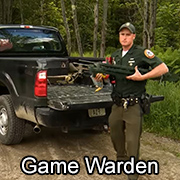 If you have any questions about the wildlife of Bridgeport, you can contact the Connecticut Wildlife Commission,
sometimes called the Connecticut Fish & Wildlife Agency. Connecticut game wardens address many wildlife management matters, from hunting licenses, to poaching, endangered species, and Bridgeport wildlife management.
They deal with wild animals outside the range of a pest control company, such as cougars or bears. If you have a problem with nuisance wildlife in Bridgeport like squirrels, snakes, bats, or raccoons,
the state agency is very unlikely to help. You need to hire a private company (here are their prices) such as BearClaw Wildlife at 203-635-4650.
If you have any questions about the wildlife of Bridgeport, you can contact the Connecticut Wildlife Commission,
sometimes called the Connecticut Fish & Wildlife Agency. Connecticut game wardens address many wildlife management matters, from hunting licenses, to poaching, endangered species, and Bridgeport wildlife management.
They deal with wild animals outside the range of a pest control company, such as cougars or bears. If you have a problem with nuisance wildlife in Bridgeport like squirrels, snakes, bats, or raccoons,
the state agency is very unlikely to help. You need to hire a private company (here are their prices) such as BearClaw Wildlife at 203-635-4650.
I also have listed several sources for free Bridgeport wildlife help. One example, if you've found an injured animal or lost baby bird or other baby animal is the Bridgeport Wildlife Rehabilitation Clinic: 203-214-7427 Or just read below for more info about the wild animals of Bridgeport.
Types of Wildlife and Animal Problems in Bridgeport, CT
Connecticut State bird: American robin
State mammal: Sperm whale
State fish: American shad
State insect: European mantis
Connecticut has no direct ocean coast, despite people in the state having easy access to the Atlantic Ocean. Instead, the region is heavily forested with broad-leaved trees and a spattering of coniferous woodlands. The state is relatively small when compared to the others in the nation, but it does have a hilly, mountainous region in the northwest. The climate consists of warm summers and cold winters, with the humidity and moisture content tempered by the Atlantic Ocean. While there is no direct coastline for the ocean, the state sits on the waters of Long Island Sound and Block Island Sound.
The wildlife in Connecticut is consistent with many of the regions in the Northeast. Black bears are the largest, potentially carnivorous animals in the state, though the bears tend to busy themselves with raiding bird feeders, eating berries, or digging for insects. Black bears can become troublesome, especially near campsites or in areas where people aren't able to secure food or trash. Aside from the black bears, coyotes lead the predator list in Connecticut. There are no breeding populations of wolves or mountain lions, though both of those large predators were in the area centuries ago.
The large grazing animals have remained, and Connecticut has moose and deer, but no elk. The state is also home to lemmings, a tiny creature made notorious for trips to the ocean where it drowns itself. This myth about the little animal is not accurate; lemmings will migrate and sometimes attempt to cross water where some drown from the stresses of swimming, but they don't cast themselves into water for no reason. The Connecticut lemming, however, does not leave the state, and does not participate in what people dubbed "mass suicides".
Other creatures thriving in the forested region are raccoons, skunks, porcupines, gophers, woodchucks, rabbits, bats, foxes, minks, opossums, rats, otters, beavers, and weasels. All of these animals have grown bold from living next to mankind for years, and any one of them can be a potential pest animal.
Because Connecticut does sit on the water, it also has a variety of marine animals. Harbor seals and manatees are common in the waters around the state. Lizards, salamanders, and lungless salamanders are also frequent sights. A lungless salamander takes in oxygen through its skin rather than through traditional lungs.
If you need a professional wildlife trapper in Bridgeport, CT call BearClaw Wildlife: 203-635-4650
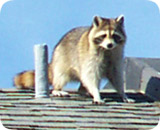
Bridgeport Raccoons:
This masked animal is fairly common in Bridgeport, CT. They frequently raid trash cans and steal pet food. They also often choose to live in the attic or chimney of your home. One of Connecticut's beautiful animals, but often a nuisance. We offer Bridgeport raccoon removal.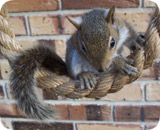
Bridgeport Squirrels:
Squirrels are often a pest in Bridgeport. They love to live in an attic, and will chew on wood or electrical wires. They are agile creatures, and live throughout the state of Connecticut. Call BearClaw Wildlife if you need squirrel removal in Bridgeport.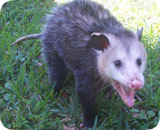
Bridgeport Opossum:
You may spot this animal in Bridgeport at night time, perhaps rooting through your garbage. This opportunistic animal will take your pet's food or live under your porch. The possum is a great Connecticut survivor, and not all that ugly.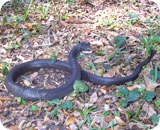
Bridgeport Snakes:
There are many species of snakes in Bridgeport, but few are venomous. If you need help identifying snakes of Connecticut, browse this site or give us a call at 203-635-4650. We at BearClaw Wildlife can provide Bridgeport snake control any time you need us.
Bridgeport Rat Control:
The Norway Rat, Roof Rat, and House Mouse inhabit most areas of North America that people inhabit, including most Connecticut cities. They contaminate food and love to live in the walls or attic of a home. BearClaw Wildlife can get rid of them once and for all.
Bridgeport Bats:
Bats are special animals, and found throughout Connecticut. They are good creatures and eat a lot of insects, but if you have an infestation of bats in your home or building, you can give us a call for professional Bridgeport bat removal and control.REPORT WILDLIFE ISSUES: 203-576-7727
To report a dead animal on the road, an injured bird, a lost baby squirrel, a dangerous bear, or anything like that, call animal services at 203-576-7727
If they can't help, call the Connecticut Wildlife Commission at 203-576-7727. You can also call your local sheriff department at 203-576-7727 - they often deal with public wildlife issues.
We are experts with all kinds of CT wildlife and are familiar with the wild animals native to Bridgeport. If you need Bridgeport pigeon control, geese or other bird removal, we can help. We are experts with skunks and
skunk problems, digging animals such as moles, armadillos, & groundhogs, and we offer Connecticut beaver control and removal. BearClaw Wildlife also provides dead animal removal services. 203-635-4650
We service all of Connecticut.
Bridgeport Wildlife Tip
Rodents & Holes & Homes Are Bad News - If you discover that rodents are inside your home, you should not immediately block off the holes. It is not a good idea to seal off holes until all the rodents have been removed. Doing so can lead to bigger problems. Once you seal off the holes in your home that are used as entry points, a rodent can chew through the material in order to get out. If the rodent is not able to get out and dies stuck inside the wall or ceiling, then an odor will eventually develop. This means that you have to open the space and have the rodent removed, which means extra work for you.
If holes are not sealed off properly, then a rodent can just as easily re-enter your home by chewing through the material again to make more holes. Once rodents make their way inside they will set up a nest, which will attract more rodents and create a health hazard. Since a rodent can find many entry point, it is important to constantly check your attic and garage, and for any loose boards and vents. First staple coarse steel wire screening (hardware cloth) over the entry point, and then cover it with a cosmetic trim. Remember that rodents are unable to chew through steel. Also make sure to install a chimney trap/guard.
Bridgeport, CT Wildlife News Clip:
Wildlife - Raccoons and Snakes and Ferrets and Prairie Dogs in Bridgeport
In 1998, black-tailed prairie dogs were deemed deserving of "threatened" status under the Endangered Species Act since they occupy less than 2 percent of their historic range. But the pint-sized rodents were never officially listed, because they are considered vermin by many rural Westerners. Connecticut has an abundance of wildlife, and Bridgeport is no exception.
"They've always been a pest, so you might as well just shoot them. That's been the mentality. They're a lot like wolves in that way," said Cheyenne Mountain Zoo's Garelle, who also works with wolf reintroduction. In 2004, prairie dogs were dropped from consideration as a federally protected species. In South Dakota, state and federal agencies started allowing poisoning of prairie dogs in ferret habitat in Conata Basin. Although several species of wildlife roam Bridgeport, only a few, such as raccoons and squirrels, are considered pest wildlife.
Although killing prairie dogs is allowed only in "buffer zones" around private land, the affected areas include 30 percent of the ferret land. "They targeted the best ferret habitat on earth for poisoning. It just doesn't make any sense," said Jonathan Proctor of Defenders of Wildlife. Proctor has lobbied to protect prairie dogs and expand ferret reintroductions into New Mexico and Texas. Connecticut has many reptiles, and it's important to be able to identify Bridgeport snake species and mammals.
He said any lasting solution for Raccoons and Snakes and Ferrets must include protecting and reintroducing prairie dogs to parts of the Great Plains, including places like Connecticut's Comanche National Grassland. Remember to treat the wild animals of Bridgeport, Connecticut, with respect.
Critter Problem at Your House? Hire BearClaw Wildlife
Wildlife removal is not a free service.
 If you have a Bridgeport wildlife problem and need help, call BearClaw Wildlife at 203-635-4650. They provide professional wildlife control for both residential & commercial customers in the
city of Bridgeport. They offer custom Bridgeport wildlife control
solutions for almost any type of wildlife problem, whether
it be the noises of squirrels running through the attic, a colony of bats living in a building, or
the destructive behavior of a raccoon, they have the experience and the tools to quickly and professionally
solve your wild animal problem in Fairfield County in Connecticut. Check their prices, and for a consultation, give them a call at 203-635-4650
If you have a Bridgeport wildlife problem and need help, call BearClaw Wildlife at 203-635-4650. They provide professional wildlife control for both residential & commercial customers in the
city of Bridgeport. They offer custom Bridgeport wildlife control
solutions for almost any type of wildlife problem, whether
it be the noises of squirrels running through the attic, a colony of bats living in a building, or
the destructive behavior of a raccoon, they have the experience and the tools to quickly and professionally
solve your wild animal problem in Fairfield County in Connecticut. Check their prices, and for a consultation, give them a call at 203-635-4650
Bridgeport, Connecticut has the most people of any city in the state of Connecticut. Originally, Bridgeport was known for its fishing and farming, but it has grown to be so much more today. It has an approximate population of 140,000 people and is nicknamed the "Park City." The recently-built Arena at Harbor Yard serves as the city's sports and hospitality center, and its strong attraction has drawn business from many parts of Connecticut, including New Haven and Hartford. It is also associated as part of the greater New York City metropolitan area because many people who live in Bridgeport, work in NYC and take public transportation to get there each day. There is also the ferry service across Long Island Sound that takes tourists to Port Jefferson for an afternoon of sightseeing. One final noteable fun fact about Bridgeport is that it's the birthplace of the frisbee and is the headquarters of the Frisbee Pie Company.
You're still reading this page? We do not operate Bridgeport wildlife rescue, or a Bridgeport zoo or nature center, or Bridgeport wildlife sanctuary or refuge for volunteers. We are a privately owned nuisance wildlife removal service company. If you need a pro in Bridgeport to solve your problem for you, call BearClaw Wildlife: 203-635-4650 and they can help you with your Bridgeport wildlife problem.








































